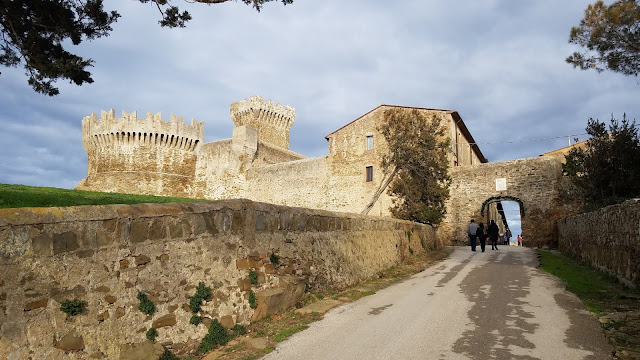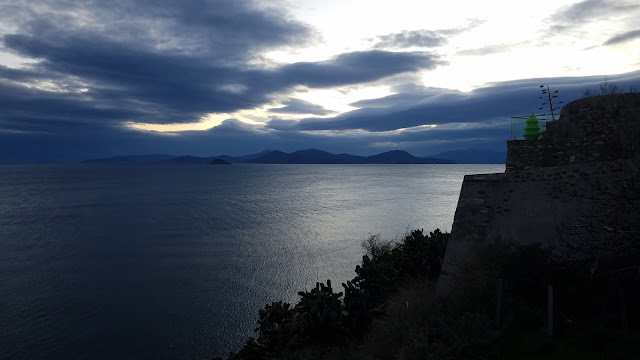 |
| Other Etruscan tombs were built here in the 3rd century B.C. |
 |
| The inside of the Tomb of the Chariot. They played spooky Etruscan music inside to show its acoustic qualities. |
 |
| The Appiani lords of Piombino built a fortress overlooking this site in the 15th century with stone from the Etruscan settlement. |
 |
| The Tomb of the Bronze Offering was covered with a 7m thick slag heap when it was discovered. |
 |
| Some stonework is left in the tombs. |
 |
| The ground glitters with slag. |
 |
| A short hike from the tombs on the coast is the Necropolis of the Grotto. Many tombs are also built into the side of the hill. |
 |
| The Necropolis of the Grotto |
 |
| A quarry next to the necropolis |
 |
| Populonia is thought to be named after the Etruscan god Fufluns (Fufluna) |
 |
| The citadel |
 |
| Populonia Alta is an Etruscan/Roman city next to the citadel where the rich refinery owners lived. |
 |
| The citadel is now a cute touristy town. |
 |
| The Populonia Museum is in Piombino, which was an independent principality from 1400-1805. |
 |
| Leonardo Da Vinci helped design the city's walls. |
 |
| Etruscan burial helmets |
 |
| A 6th century BC bronze bell horse harness. |
 |
| A 5th century vase thought to be made by the Florence Painter. |
 |
| Gorgon cups |
 |
| A luxury Roman vase possibly made in Antioch. Another similar vase has been found in Moldova. The vase has 132 medallions on it depicting characters from the myth of Paris. |
 |
| Fish mosaic! |
 |
| Elba |

No comments:
Post a Comment